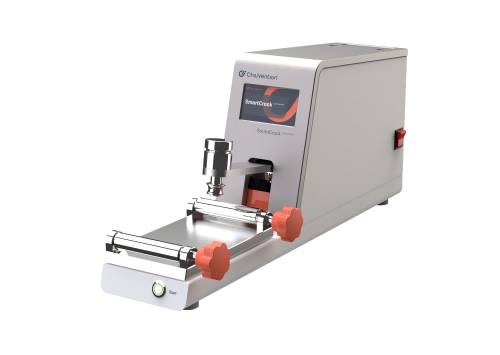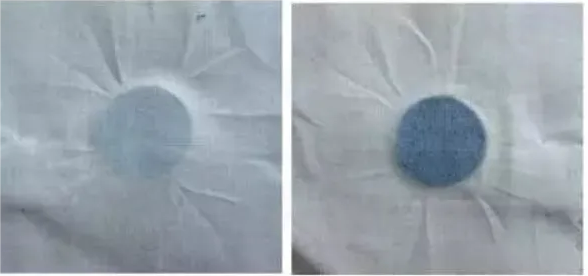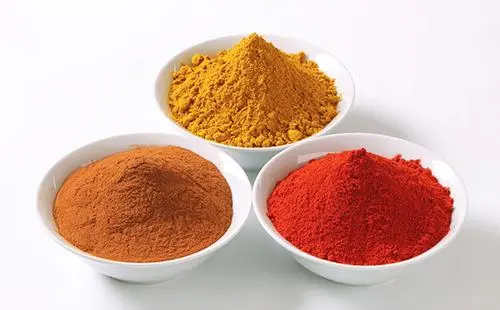We expect the plant to conduct rubbing fastness tests quickly. The customer requested a quick completion. But, sometimes, they can’t meet the requirements! The technicians in the dyeing workshop are very busy! That said, let’s first understand what is the colour fastness index and its types. GB18401-2003 is the name of the standard. It says that qualified products must have certain color fastness indicators. They must be at level 3 or higher. Colour fastness ratings are: level 1, 1-2, 2, 2-3, 3, 3-4, 4, 4-5, 5. 5 grades of 9 grades, level 1 is the worst, level 5 is the best (no fading). 3 can only be a basic level, is an intermediate level.
Textile color fastness includes resisting: soap, rubbing, light, bleach, ironing, sweat, and perspiration.
01 Colour fastness to rubbing
We test for color fastness to rubbing by rubbing the textile specimen with a dry cloth and a wet cloth. This shows how much the cloth stains. From the above concept, we know that there are two kinds of color fastness to rubbing: dry rubbing and wet rubbing. The assessment is the staining of the rubbing cloth, not the specimen’s discoloration.
02 Colour fastness to rubbing standards
People commonly use the standards to measure color fastness to rubbing. They are GB/T 3920-2008, AATCC 8-2007, AATCC 116-2010, and JIS L 0849-2004.
| Colour fastness to rubbing standardisation | ||||
| Item | GB/T 3920-2008 | AATCC8-2007 | AATCC 116-2010 | JIS L0849-2004 |
| Specimen size/mm | 50X140 | 50X130 | At least 25mm square | Tribometer Type I :50X140 Tribometer Type I :30×220 |
| Friction head size/mm | Round (general fabric) diameter: 16±0.1 Square (fleece): 19×25.4 | Round Diameter:16±0.3 | Round Diameter:16±0.3 | Round Diameter:16±0.9 |
| Vertical pressure of friction head/N | 9±0.2 | 9±0.9 | 11.1± 1.1 | 9±0.9 |
| Friction range/mm | 104±3 | 104± 3 | not have | 100 |
| Friction times | 10 rubs in 10s | 10 rubs in 10s | 40 opposite trajectories | 100 rubs in 200s |
| Friction cloth size/mm | Non-fleece:50×50 Fleece:25×100 | 50X50 | 51X51 | 60×60 |
| General Terms and Conditions of Cybozu Friction Cloth | 100%cotton,whiteness(70±5)%.
| 100% combed cotton, whiteness (80士2)% | 100% combed cotton, whiteness (80士2)% | 100% cotton, 85% whiteness |
| Water content of friction cloth/per cent | 95~100 | 65 | 65 | 100 |
| Running direction | Friction cloth warp direction is the same as the running direction | Friction cloth warp direction is the same as the running direction | fixed point rotation | Friction cloth warp direction is the same as the running direction |
| Sample card for rating | G8 251 colour staining sample card | AATCC Grey Card or Colour | AATCC Grey Card or Colour | JISL0805 Put colour grey card |
The table shows that the four standards differ in:
Specimen size
Number of rubbings
Cloth moisture
Rating grey card.
Testing by each standard gives different results.
AATCC 116-2010 (rotary rubbing method) applies to yarns or fabrics. They can be made of various fibers. It is especially good for printed fabrics. At can test a smaller area than AATCC 8-2007 requires. It can show the rubbing fastness of multi-coloured fabrics in all colors. This can help find the causes of poor rubbing fastness. It’s for multi-coloured fabrics and it’s fast. Then, we can take measures to improve it. It helps to quickly find the reasons for poor rubbing fastness in multi-coloured fabrics. Then, we can take steps to improve rubbing fastness.
In the rubbing fastness test, uneven weaving and dyeing can cause inconsistent results. They show up after many rubs. This inconsistency is accidental. So, we must measure many times and use the repeatable results to make reports.
03 Influence factors of colour fastness to rubbing
1、Unsolidified dyes cause the most rubbing-fastness issues.
This is true for rough or hairy fabrics like velvet. It’s also true for hard fabrics like linen, denim, and printed paint fabrics. Dry friction easily builds up dyes or paints on fabric. This grinding even fractures colored fibers. This forms colored particles that make rubbing-fastness worse. The colour fastness to dry rubbing is further reduced. Velvet and hairy fabrics can abrade. The velvet’s surface and the friction cloth’s surface touch at an angle, not parallel. This increases the friction of the rubbing head. It makes such fabrics lose color fastness.
2、Lightweight fabrics, usually made of synthetic fibers or silk, have a loose structure.
This structure impacts the surface of the sample. In dry friction, the fabric’s looseness causes some slippage. This slippage increases friction and efficiency. But, wet friction is different from that of cellulose fibers.
The fibers have very low hygroscopicity. They do not expand much in water. The water also acts as a lubricant. Due to this, the fabrics have better color fastness to wet rubbing than dry rubbing.
For some specific fabrics, the color fastness to wet rubbing is better than to dry rubbing. In this case, the chosen dye will impact color fastness to rubbing. It’s performance, dyeing conditions, and finishing conditions will too. But, they are less important. The fabric’s structure and surface and other physical factors matter more.
Most of the products in which this occurs are still dark colours, such as black, red and navy. For fabrics like corduroy, twill, and paint print, their wet-rub color-fastness is usually level 2 or lower. This is due to the dyestuffs used and the printing and dyeing process. It is not better than their color-fastness to dry rubbing.
3、The influence of the chemical structure of reactive dyes
We test cellulosic fabrics dyed with reactive dyes for wet rubbing color fastness.
There are two main factors that cause colour transfer:
(1) The dyes dissolve in water. They transfer to the rubbing fabric when rubbed. This makes the original color fade and the fabric stained.
(2) Some of the dyed fiber breaks during rubbing. It forms tiny colored particles. These particles transfer to the rubbing fabric, staining it.
Factors that may affect the colour fastness of reactive dyes to wet rubbing are:
The dyes have a structure and characteristics. The fabric’s nature matters. So does pre-treatment, fabric breakage, and surface finish.
The dyeing process affects soaping after dyeing. The colour-fixing treatment affects fabric dyed after dyeing. Post-finishing affects dyed fabric.
The study shows that some covalent bonds are stronger. Also, it shows some differences in the stability and adhesion of bonds. These bonds are formed by reactive dyes with different structures and cellulose fibers. But, there is no big difference in their effect on the color fastness to wet rubbing of dyed fabrics. When wet rubbing happens, the dye’s covalent bond with the fiber does not break. This bond forms between the dye and the fiber. It would produce floating color if it broke. The dye transferred is usually oversaturated and not bonded to the fiber. The dye adsorbed is held by van der Waals’ force. This is the so-called floating color.
4、Reactive dyes influence the dyeing degree and color fastness of fabric.
They also affect the wet friction and dyeing depth. The wet friction’s effect on color transfer and dyeing depth is nearly linear. Too much dye cannot mix with fiber. It can only stick to the fabric’s surface and make floating color. This color greatly harms the fabric’s wet rubbing fastness.
Cotton fibers need special treatment when wet. Without it, expansion and friction rise, and fiber strength falls. These problems cause breakage and shedding in colored fibers. They also make colors transfer. So, before dyeing cellulose fibers, do pretreat them. This can include mercerization, burnishing, cellulase finishing, boiling, bleaching, washing, and drying. These steps can improve the fabric’s finish and gross effect. They can reduce friction and floating color. This will improve the fabric’s wet-rubbing color fastness.
5、Softeners improve the color fastness of reactive dye printing.
They do this through soft finishing. Softener lubricates. It reduces friction. This prevents the dye from coming off. Softeners can also form color clumps with anionic dyes. Dyes do not easily come off. At the same time, the color makes the dye less soluble. This can improve wet rubbing fastness. However, the softener has a hydrophilic group. It does not help improve wet rubbing fastness. In production, we can close the water-soluble groups of dyes using colour-fixing agents. We can do this by controlling the pH of the fabric’s surface. We also remove floating color and make the fabrics smooth. This process improves the wet rubbing fastness of the fabrics. Proper pre-drying in the first section can avoid the “swimming shift” of dyestuff. Pay attention to factors like the alkali amount, steam time, and washing method. These factors affect the degree of dye breakdown. Adequate soaping affects the floating color of dyed products.
After dyeing the fabric, especially long and rolling dyeing, wash it enough. This removes floating color and unreacted and hydrolyzed dye. It stops color fastness from being affected. If you don’t do this, the color fastness will be poor. Also, the color will become atrophied and dark.
04 Afterword
Above, factors affect fabric rubbing color fastness. The function principle of each varies greatly. They also differ in their degree of influence. The problem of color fastness may seem simple, but the factors are complex. Over the years, people have put much effort and resources into dye research and production. They have also done so in textile dyeing and processing. And they aim to solve the problem of textile color fastness. They made great progress, with many new dyestuffs, processes, and auxiliaries emerging. But, many problems remain.
For more information on textile testing methods/standards
or textile testing machines, contact us:
What’s App: +86 180 2511 4082
Tel: +86 769 2329 4842
Fax: +86 769 2329 4860
Email: medium@chiuvention.com


